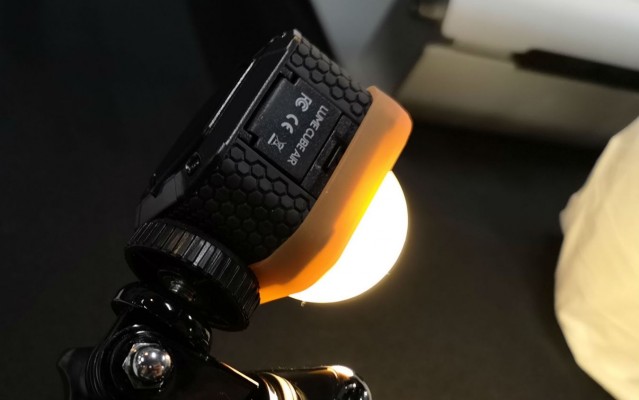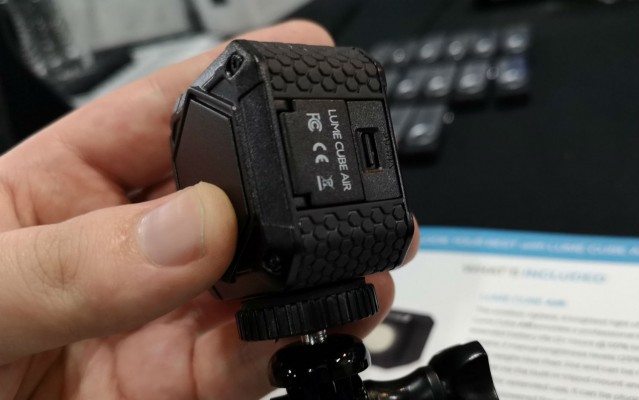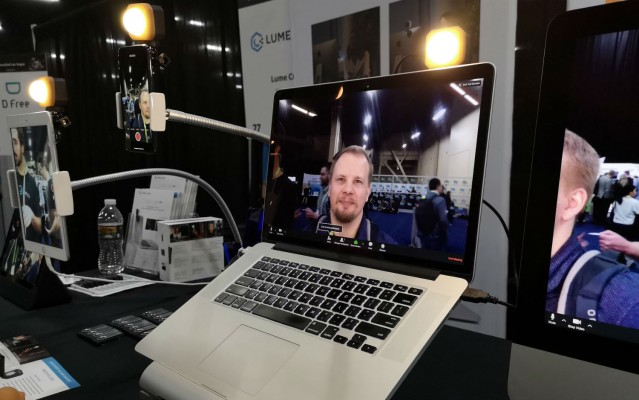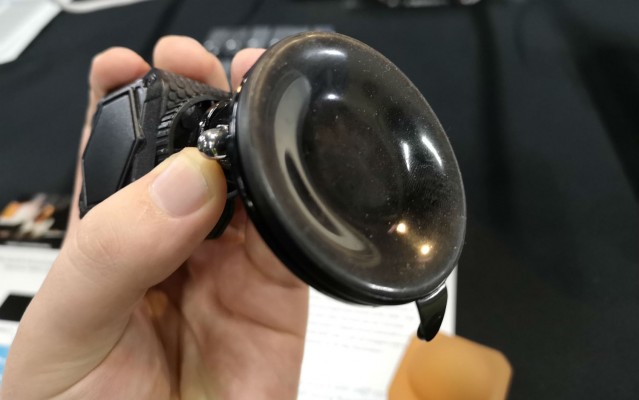This Lighting Kit Fixes Your Laptop's Awful Webcam
Face it, your laptop's webcam is bad. For whatever reason, when companies pack their products with the latest and greatest tech, they tend to forget about the webcam.
That becomes especially obvious when you power up the camera app in a dark environment. Picture quality in low light is often grain, blurry and practically unusable.
But for how much we criticize those cameras, most laptops can actually capture a decent image under the right lighting. That's where the Lume Cube Air VC comes in. Using a suction cup mount and the Lume Cube Air lamp, the newly released Air VC can be attached to just about any gadget, including smartphones, laptops, and tablets.
The concept is simple. Just mount the Go Pro-shaped Cube Air light onto the back of your laptop using an included suction cup. From there, you can use the accompanying app to customize brightness, light strobe and strobe speeds. The adjustable 400 LUX wide-angle LED will do the rest of the work, brightening up your face to improve the overall quality of your video.
MORE: How to Turn Off Your Webcam
I got a chance to demo the Lume Cube in a terribly lit conference room where it could really shine (sorry, pun intended). The image quality of the MacBook Pro improved the moment the light was flipped on. Better yet, the Cube didn't overexpose my face or cause the webcam to blown out the background.
Because the Lume Cube relies on a suction cup, you can move it from one device to another without adjusting or changing out clamps. The lightweight Air VC is waterproof and has an internal battery for wireless use. The light charges via USB.
Sign up to receive The Snapshot, a free special dispatch from Laptop Mag, in your inbox.
The Air VC is available now for $79.95. That makes it somewhat of a tough sell considering you can buy the Razer Kiyo, a 1080p webcam with an adjustable ring light, for $99. Still, I could see the Air VC being a useful tool for creators or business users who need a solution on-the-go.
- Best External Laptop Webcams - 4K, Streaming, Budget Picks
- Razer Kiyo Review: A Webcam Game Changer
- Logitech HD Webcam C310 - Full Review
Phillip Tracy is the assistant managing editor at Laptop Mag where he reviews laptops, phones and other gadgets while covering the latest industry news. After graduating with a journalism degree from the University of Texas at Austin, Phillip became a tech reporter at the Daily Dot. There, he wrote reviews for a range of gadgets and covered everything from social media trends to cybersecurity. Prior to that, he wrote for RCR Wireless News covering 5G and IoT. When he's not tinkering with devices, you can find Phillip playing video games, reading, traveling or watching soccer.





